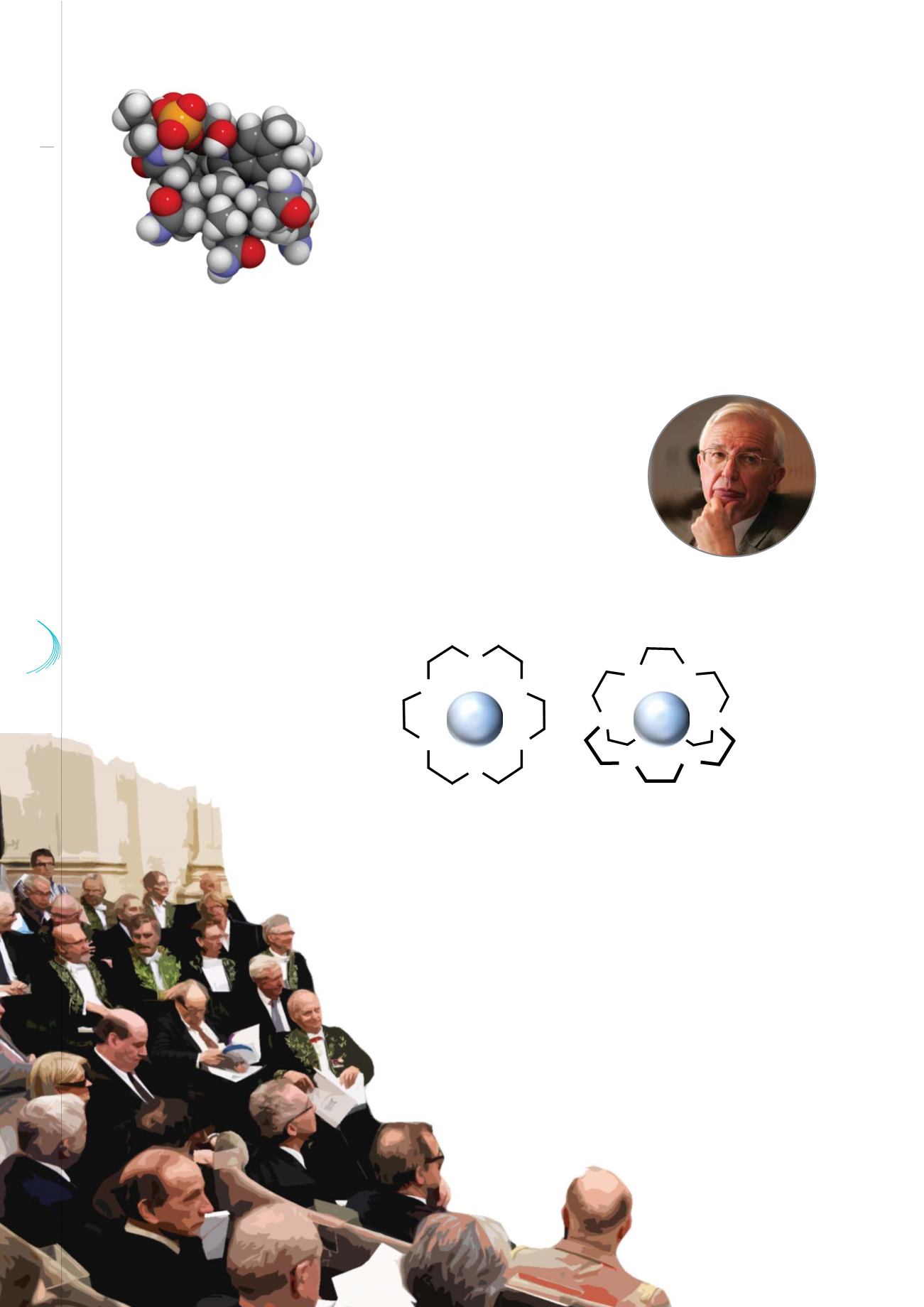

adémie des sciences
© From B.Eymann - Ac
37 38
52
La Lettre
Vitamin B12 molecule
© molekuul.be - Fotolia
© DR
o
o
o
o
o
o
K
+
o
o
o
o
N
N K
+
Supramolecular chemistry deals
with the complex combinations that
molecules form with one another:
here, a cryptate, for whose discovery
the Member of the Académie des
sciences Jean-Marie Lehn was
awarded the Nobel Prize in Chemistry
in 1987.
Jean-Marie Lehn
synthesize increasingly more complex molecules. Vitamin B12,
in this respect, is quite exemplary. This molecule, which is vital to
us, is synthesized naturally by microorganisms - bacteria, fungi,
algae. It was an object of investigation for numerous studies,
leading to four Nobel Prizes. Isolated in 1948, its structure was
elucidated in the early 1960s. Its synthesis, published in 1973,
was achieved through the use of the Woodward-Hoffman rules
that describe chemical bonding in terms of molecular orbital
symmetry.
Chemical synthesis had made it possible to move from atoms to molecules, and
now to supramolecular chemistry, in which the molecules assemble into increa-
singly complex structures (Cram, Pedersen and Lehn, 1987 Nobel Prize).
The issue was no longer to study
the properties of a given molecule,
but to consider the synergy their
associations created. This blur-
red the borders between organic
and inorganic chemistry. Organo-
metallic compounds, coordination
complexes and organic-inorganic
hybrids developed, in which metal
atoms are associated to organic
ligands.
During the second half of the 20
th
century, inorganic chemistry
turned to the study of structure-properties relationships. Such
research, primarily conducted on crystals, in close interaction
with physicists, have led to the development of materials with
remarkable physical properties - spintronics, semiconductors,
magnetism, superconductivity, photovoltaics, etc. Quite
memorable was the revolution brought about in 1986 by the
synthesis of superconducting ceramics (Berdnoz and Muller,


















